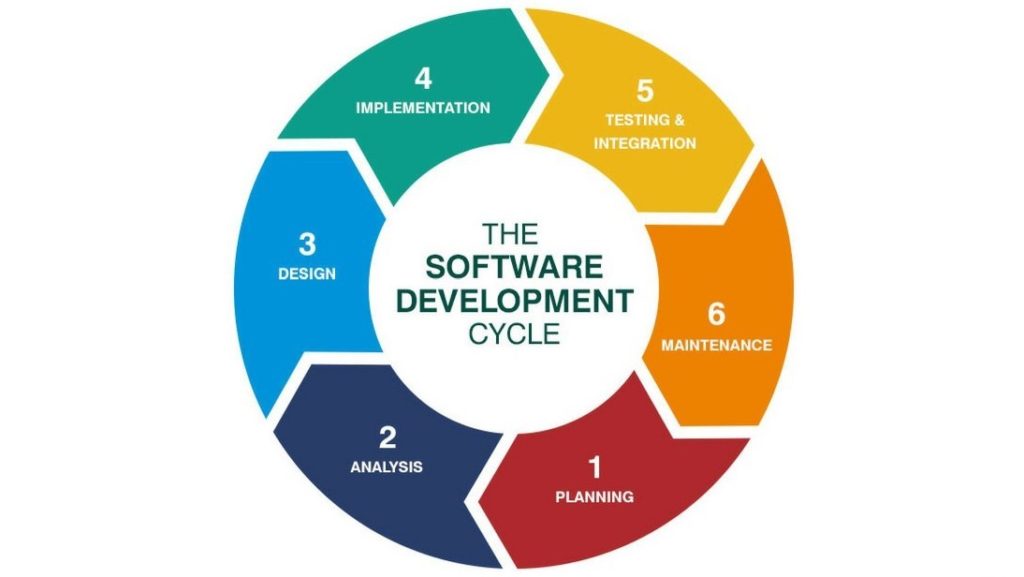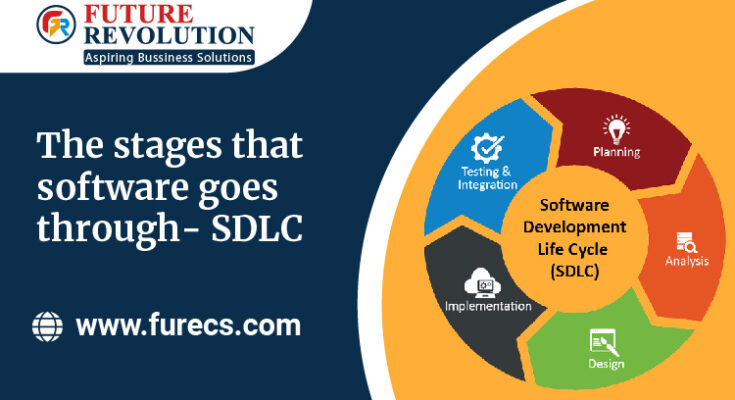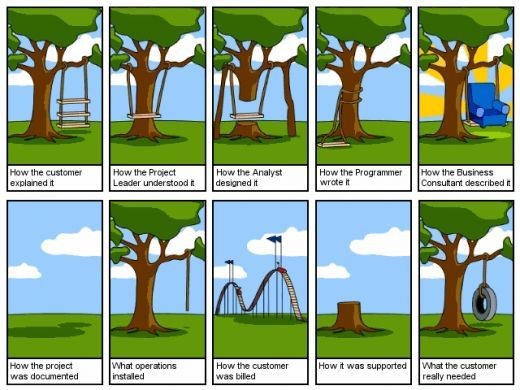As quoted by Louis Srygley, “ Without requirements or design, programming is the art of adding bugs to an empty text file”, building software is not just about programming well but it is different stages and their outcomes put together that makes a good product at the end.
Software Development Life Cycle (SDLC) is a process used by the software
industry to design, develop and test high-quality software. The SDLC aims to produce high-quality software that meets or exceeds customer expectations, reaches completion within times and cost estimates. It consists of a detailed plan describing how to develop, maintain, replace and alter or enhance specific software. The life cycle defines a methodology for improving the quality of software and the overall development process.

As the picture above, the stages are:
1. Requirement and planning
2. Analysis
3. Design
4. Implementation
5. Testing and integration
6. Maintenance
It aims to produce a high-quality system that meets or exceeds customer expectations, works effectively and efficiently in the current and planned information technology infrastructure, and is inexpensive to maintain and cost-effective to enhance.
We often mistake software development with web development, which is two different concepts altogether. Creating web applications and developing software has its own perks.
Software Development follows different methodologies for building the software or for a development process that are Waterfall model, the Iterative model, Spiral Model, the Agile methodology, the prototype model, rapid application development, DevOps, etc. Whereas Web development follows the different methodologies to build or develop applications like Agile methodology. The process of breaking big tasks into small and checking the continuous progress from beginning to end to design the web application that is website optimization which is also very important along with making it an SEO-friendly website development.
Web development follows a similar phase like the SDLC where these are the phases:
1. Requirement
2. Planning
3. Designing
4. Content management or writing
5. Coding
6. Testing
7. Deployment, hosting, and maintainability.
Now that we know the difference between Software development and web development, let us dive into each phase of the software development life cycle.
1. Requirement Phase
This is the most important phase in the cycle since it is the beginning one and no other process can continue without correct requirements and planning. Meeting with the stakeholders is very important for this phase since one must understand the requirements of the client.
The image above discusses the fault in the first phase. If requirements are unclear, incomplete, too general, or not testable, there will be problems.
2. Analysis phase
Once the requirement gathering and analysis are done the next step is to define and document the product requirements and get them approved by the customer. This is done through the SRS (Software Requirement Specification) document. SRS consists of all the product requirements to be designed and developed during the project life cycle. Key people involved in this phase are Project Manager, Business Analysis and Senior members of the Team. The outcome of this phase is the Software Requirement Specification.
3. Design
It gives the architecture of the software product to be developed and is done by architects and senior developers. Also, each feature is described and briefing about every component in the software is done by senior developers.
4. Implementation
Developers of all levels (seniors, juniors, freshers) involved in this phase. This is the phase where we start building the software and start writing the code for the product. The outcome from this phase is Source Code Document (SCD) and the developed product.
When the software is ready, it is sent to the testing department where the Test team tests it thoroughly for different defects. They either test the software manually or using automated testing tools depends on the process defined in STLC (Software Testing Life Cycle) and ensure that each and every component of the software works fine. Once the QA makes sure that the software is error-free, it goes to the next stage, which is Implementation. The outcome of this phase is the Quality Product and the Testing Artifacts.
6. Maintenance
It just doesn’t stop after creating and testing the software. Fixing the issues found by the customer comes in the maintenance phase. 100% testing is not possible – because, the way testers test the product is different from the way customers use the product. Maintenance should be done as per SLA (Service Level Agreement).
At Future Revolution, a Website Design Company Bangalore provides you with all these solutions for your business needs. With developing a website, be it WordPress website design or anything from scratch, all according to your needs, we have got your back on building the best and efficient software along with SEO friendly website development, Digital Marketing, SMO and much more to offer.
To Know More:
- +91 8448449784 / 7760556363
- contact@furecs.com / marketing@furecs.com


